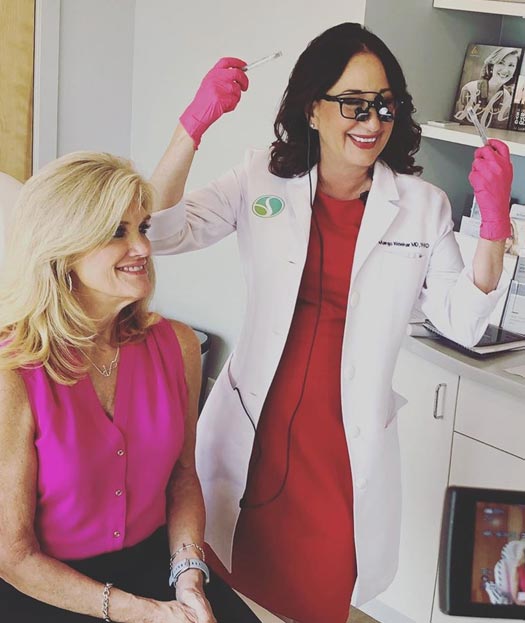JOIN THE GLOW CLUB LEARN MORE
Excessive weight typically refers to an overall accumulation of body fat that can lead to various health concerns. On the other hand, stubborn fat, scientifically known as subcutaneous fat, zeroes in on the fat cells located in targeted areas like the belly, thighs, and arms. These fat cells are notoriously difficult to eliminate through standard weight loss methods like dieting and exercising. The reason they’re called “stubborn” is that these cells are more resistant to being broken down and used for energy compared to other fat cells in the body. This means you could be losing weight overall but still find these persistent fat pockets remaining, making stubborn fat a distinct and frustrating issue apart from general excessive weight.
Subcutaneous fat is the layer of fat located just beneath the skin. The primary causes of subcutaneous fat buildup include a calorie-rich diet, lack of physical activity, genetic predispositions, and hormonal imbalances. While subcutaneous fat might be less dangerous than visceral fat, its accumulation, especially in excessive amounts, can still present health risks. It may lead to insulin resistance, a precursor to diabetes, and can affect blood flow, which in turn impacts heart health. Moreover, excessive stubborn fat can strain the body’s skeletal system and joints. Aesthetically, it can also affect one’s self-esteem and mental health, leading to stress and anxiety.
Recognizing subcutaneous fat, as opposed to excessive weight or visceral fat, involves observing specific signs and symptoms. This type of fat manifests as softer, pinchable fat located just under the skin. Unlike general weight gain or visceral fat, which is harder and surrounds internal organs, subcutaneous fat is more about appearance and less about severe health concerns.
Dr. Weishar identifies subcutaneous fat through a detailed assessment, focusing on where the fat is distributed rather than just overall weight or internal health indicators. This involves examining the patient’s medical and lifestyle history and performing physical exams to pinpoint the softer, more superficial fat deposits characteristic of stubborn fat. Imaging tests may be used for a clearer picture of fat distribution, distinguishing it from visceral fat, while blood tests check for health issues that could be linked to other types of fat accumulation. This approach ensures an accurate diagnosis, differentiating subcutaneous fat from other weight-related concerns.
Dr. Weishar offers a personalized approach utilizing the latest advancements in fat reduction treatment. Recognizing the unique needs of her patients in Philadelphia and New York, she provides:
As with any medical procedure, it’s important to consider the potential risks and side effects. Commonly, patients may experience temporary side effects such as redness, swelling, or bruising at the treatment site. Dr. Weishar prioritizes patient safety and comfort, offering thorough consultations to discuss these aspects and ensure the best possible care.
To prevent stubborn fat and excessive weight gain, Dr. Weishar recommends a holistic approach: embrace a balanced diet rich in fruits, vegetables, and lean proteins, while limiting processed foods and sugars. Combining aerobic exercises with strength training, regular physical activity is essential for burning calories and boosting metabolism. Adequate sleep, stress management, and avoiding tobacco and excessive alcohol also contribute to hormonal balance and weight control. Routine health check-ups can also identify underlying issues, supporting overall wellness and aiding in the prevention of weight gain and stubborn fat accumulation.
Overcome excessive weight and stubborn fat with Dr. Weishar. Her accolades and commitment to innovative fat reduction treatment make Springhouse Dermatology the premier choice for patients in Philadelphia and New York. Schedule your consultation today to explore how we can help you achieve your aesthetic goals with personalized care and expertise.
